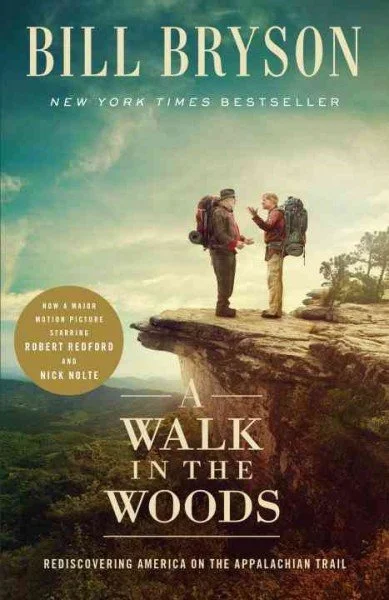Book Report: Revisiting “A Walk in the Woods”
I first read Bill Bryson’s book A Walk in the Woods: Rediscovering America on the Appalachian Trail over 10 years ago, and the truth is, I didn’t like it. However, in the wake of reading Scott Jurek’s book about setting the speed record on the AT, North, I thought Bryson’s book would be a nice complementary read.
Unlike Jurek’s blistering pace, Bryson’s approach is slow, and instead of being a professional athlete, Bryson is a professional writer. Furthermore, instead of addressing the challenges faced by the top 1% as they battle for bragging rights and speed records on the AT, Bryson deals with the challenges that most people face on the trail. More than anything, I was hoping to discover what about Bryson’s book made it resonate with so many people, but not me.
What I discovered during my second read of A Walk in the Woods is that I really enjoyed the book. Another revelation is that the book hasn’t changed, I have. When I first read A Walk in the Woods, I was working in an outdoor store, an avid hiker, a regular mountain biker, and an aspiring climber/mountaineer. I thought I knew everything about the mountains and outdoor gear. More so, I was busy consuming the canon of outdoor literature—devouring adventure classics like The White Spider, Into Thin Air, and Touching the Void.
At that time, stories of big mountains and real mountaineers filled my head, leaving little room for Bryson’s bumbling act, much less that of his foil, Katz. Compounding matters was the fact that Bryson never completed the trail—skipping a section by driving ahead in the south and then leaving less than halfway through.
Following his departure from the trail, Bryson goes on to do numerous small trips along the northern section of the AT, before once again bailing on what should be the trip’s climax. I can almost hear the younger version of myself saying that you shouldn’t write about a trip like the AT unless you’ve actually completed it.
Now that I’m older—I’m very close to the age Bryson was when he hiked the trail—I feel like I got more enjoyment from Bryson’s depiction of the quiet, contemplative moments on the trail. And while the book doesn’t take the frenetic pace of books like Touching the Void, or even North, the pace allows for Bryson to spend time diving deeper into the story of the AT and sharing some of the history of the trail.
Although I still find some of Bryson’s concern over bears and the safety of hikers on the trail overdone, I found it much easier to look past these asides on my most recent read.
If you’re looking to read a book about the AT, but have already read A Walk in the Woods, consider picking it up and giving it another read. You just might learn something new about the trail—and/or yourself.
By Tim Peck
All of the reviews and recommendations on The Whites Room are testing-driven and objective. We only earn money when you click on our affiliate links and purchase products. If you click on a product link on our site and make a purchase, the retailer will contribute a percentage of the sale to help support the fantastic content we are creating on The Whites Room. We appreciate your support!




